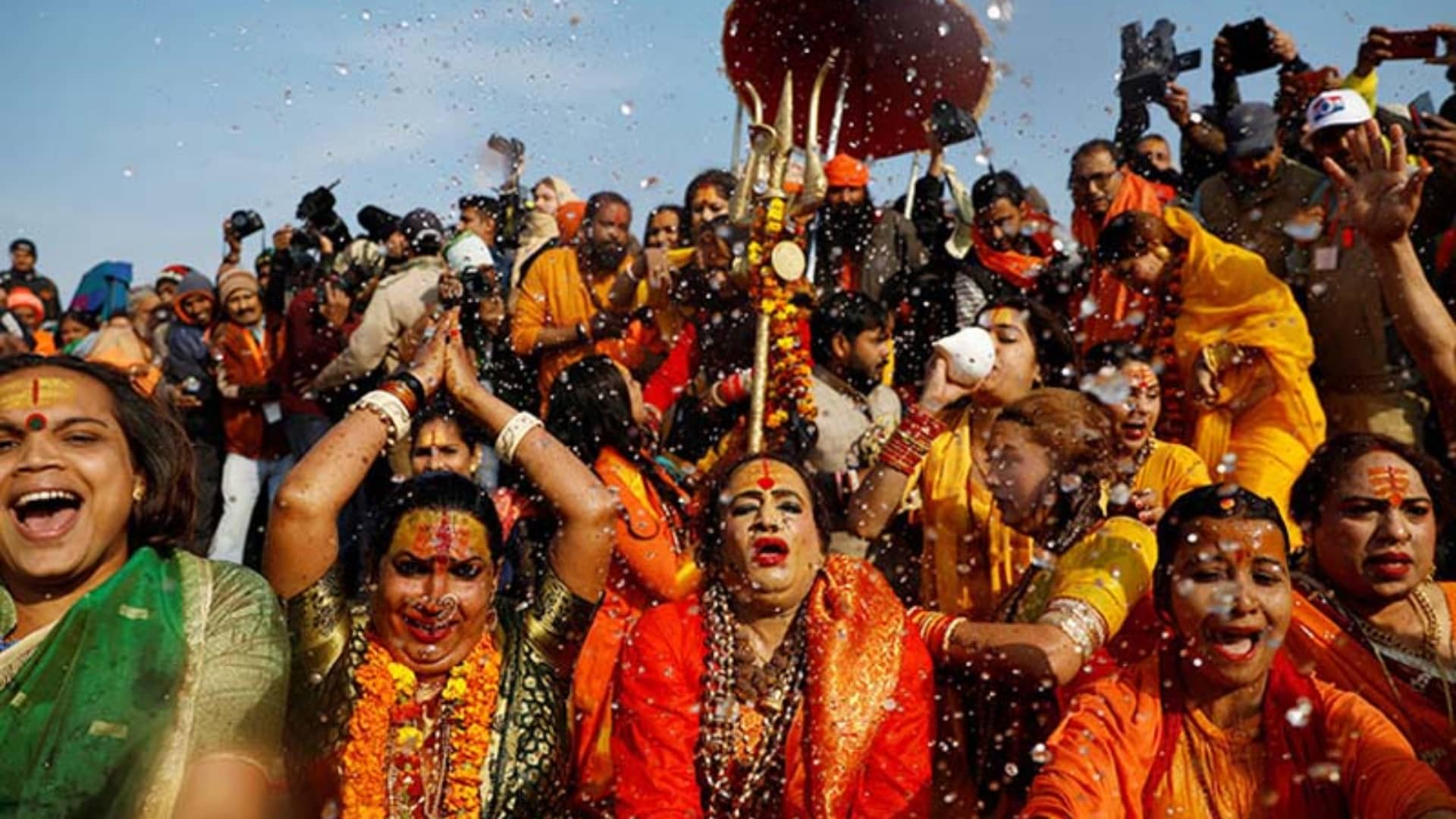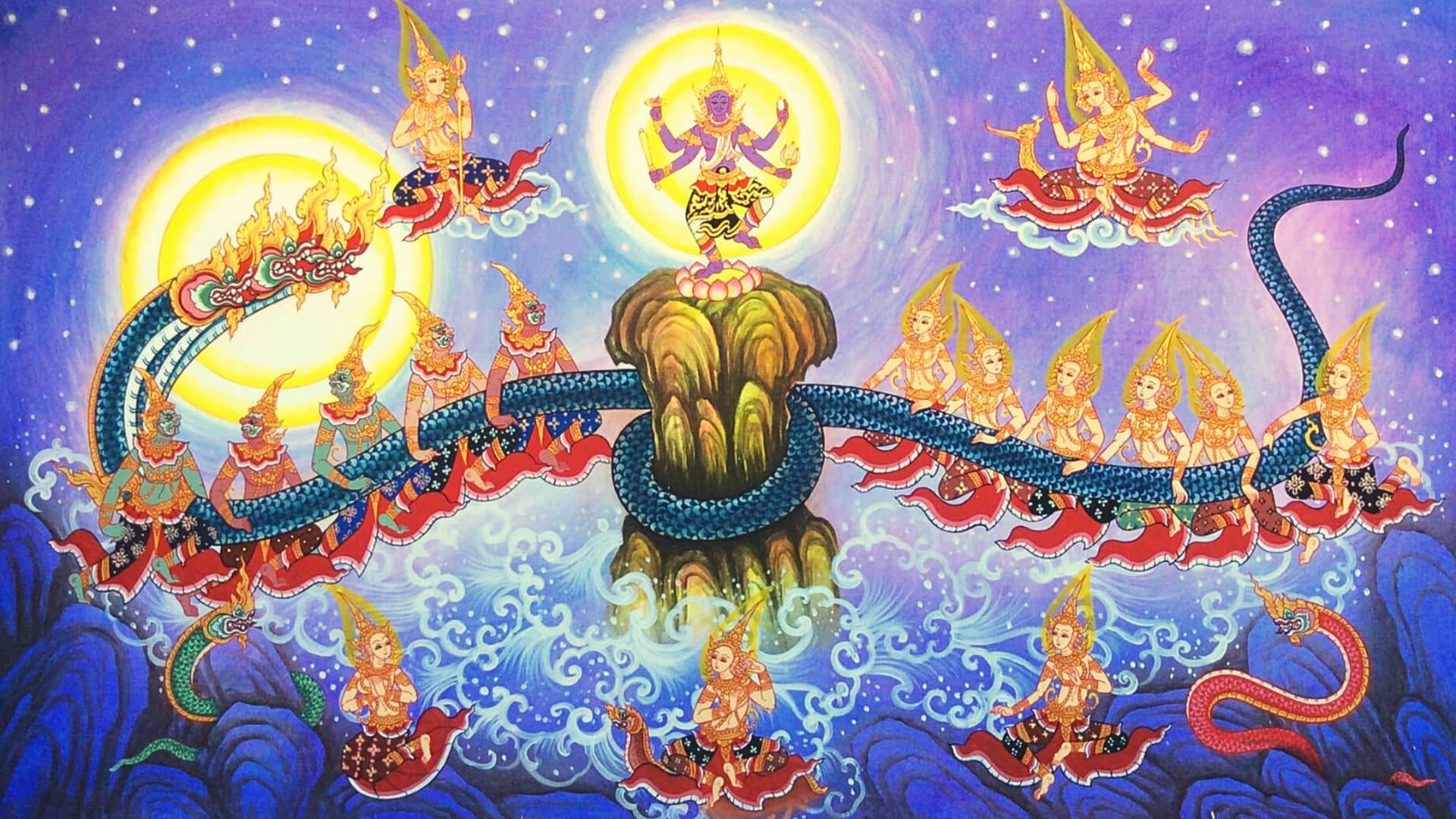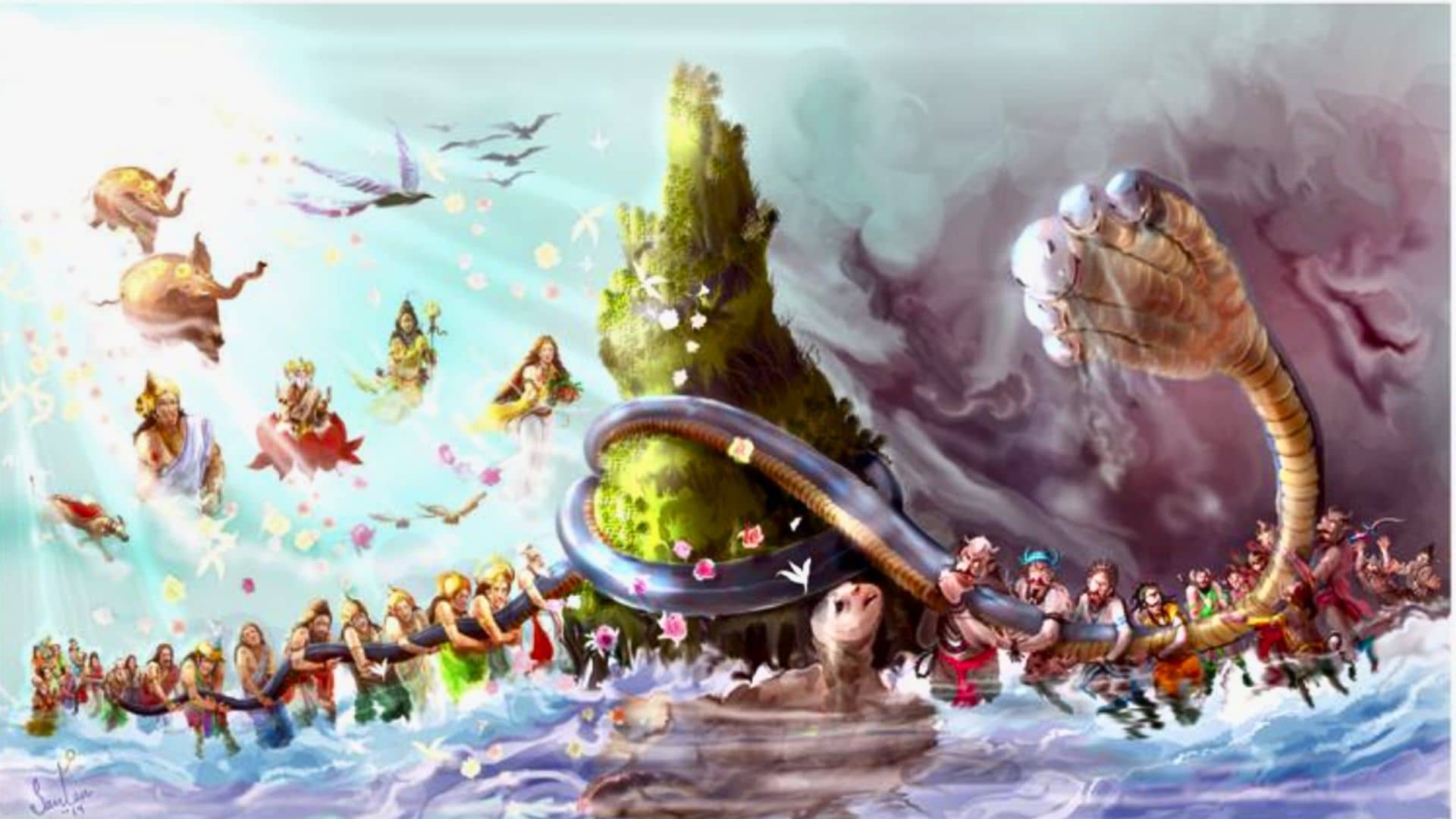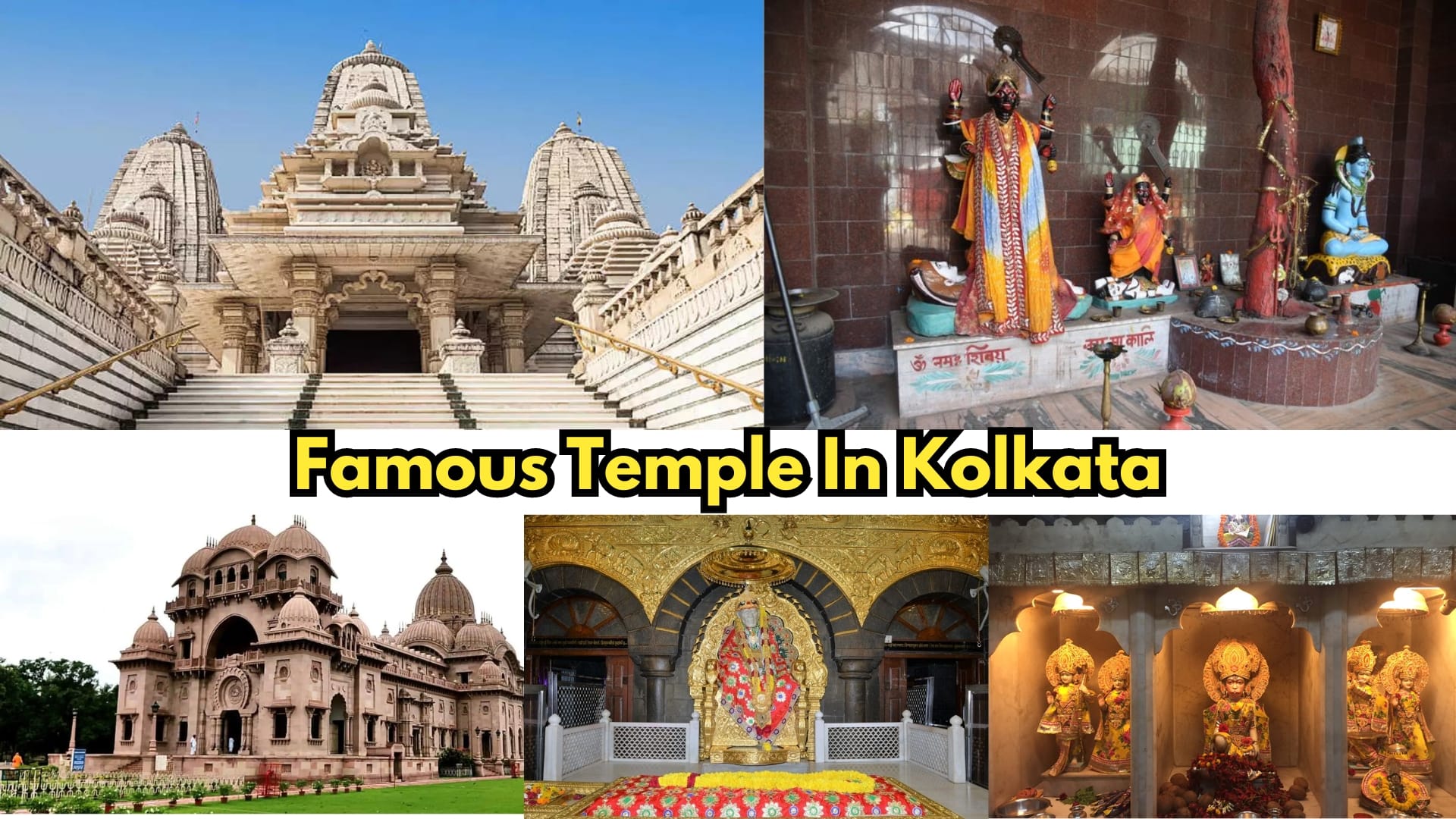Kumbha Mela, one of the most auspicious Hindu religious festivals occurs every 12 years. The Kumbha Mela is also called Kumbha Ka Mela, the festival draws more than 200 million devotees and pilgrims from different parts of the India and world. This pious Hindu festival is celebrated in four pious locations in India; Prayagraj (Allahabad), Haridwar, Nashik, and Ujjain. There are many folklores and myths connected with the Origin of Kumbha Mela, and Curious Kasturi is about to spill the most accepted origin that was traced back to ancient Hindu Mythology, the Great Churning of Milky Ocean or the Dudh Sagar Samudra Manthan.
History & Origin Of Kumbha Mela
As said by Hindu mythology, the Kumbha Mela is linked with the Samudra Manthan, the churning of the cosmic ocean (Ksheer Sagar) by the gods (Devas) and demons (Asuras) in search of the divine nectar (Amrita). During the churning, a Golden Pot (Kumbha) of Elixir/Amrita emerged from the ocean. A violent battle was fought between the Devas and Asuras to possess the pot. It is believed that during the struggle, drops of the nectar fell at the four designated locations where the Kumbha Mela is now held.
The reference of the Kumbha Mela is found in many ancient scriptures including the Puranas and the Mahabharata. The great sage Markandeya mentioned the significance of the Kumbha Mela with other significances.
Historically, the Kumbha Mela can be found back to the 8th century AD. The philosopher-saint Adi Shankaracharya established the festival as an important Hindu pilgrimage. Since then, the Kumbha Mela has been held at regular intervals based on astrological calculations and auspicious timings.

Kumbha Mela Rituals & Its Intriguing Facts
Kumbha Mela is one of the largest sacred and cultural festivals. The mela or gathering stays for 48 days and witnesses millions of devotees, pilgrims, sadhus, sadhvis, and ascetics to take holy baths and dips in the holy river.
- Royal Kumbha Bath: The most significant bathing days are popular as the Shahi Snan or Royal Bathing. It is believed that holy dips in Kumbha lead to attaining spiritual purification and liberation.
- Maha Arati: Holy prayers are performed in the evening along with Aarti, drums, and songs. Devotees take part in the prayer on the bank of the river every day during the festival.
Apart from rituals, there are so many things that attract millions of devotees and pilgrims to Kumbha Mela in four places in India (Prayagraj, Haridwar, Nashik, and Ujjain). let us put a glimpse at the events…..
- Full Moon Bath: Every day of Kumbha Mela is auspicious. Though, the day of the Full Moon is considered the most auspicious among devotees and pilgrims. It is said, whoever takes a bath on this day in this river he/she attains Moksha or salvation.
- Divine Bless: It is also said that during the festival, the rivers get infused with divine energy. So, whoever immerses into the river during this auspicious time, he/she oneself washes away sins and acquires spiritual bliss and merit.
- Cultural Aspects: The Kumbha Mela has evolved over the centuries. It not only surrounds religious rituals but also cultural and social aspects. It is a platform for religious tribute, philosophical teachings, cultural performances, and interactions among diverse groups of devotees, sadhus, pilgrims, and general visitors from different backgrounds.
- Maha Kumbha Mela: Maha Kumbha Mela is celebrated in Prayagraj only after every 144 years.
Occurrence of Kumbha Mela
General Kumbha Mela is held every three years. The last Kumbha Mela was celebrated in Haridwar. The next Kumbha Mela would be held in Prayagraj (Allahabad) in 2025 at the convergence of the Ganges, the Yamuna, and the Saraswati; known as Triveni Sangam.
In Conclusion,
With no shade of surprise, The Kumbha Mela is a sacred and grand festival. It has its deep roots in Hindu mythology and ancient traditions. It is a festival that occurs in the search for spiritual enlightenment and the unity of humanity. With its rich historical events and enduring significance, the Kumbha Mela continues to fascinate and encourage millions of minds every time it occurs. It is an extraordinary event that every Indian takes pride in.
We, Curious Kasturi, try to draw the attention of inquisitive minds and quench the thirst for knowledge with this piece blog on the Grand Kumbha Mela. If you want to know more about the origin of Kumbha Mela or try to include any new information, please let us know via the comment section. We would be happy to welcome your opinion.
Thanks for your time!



